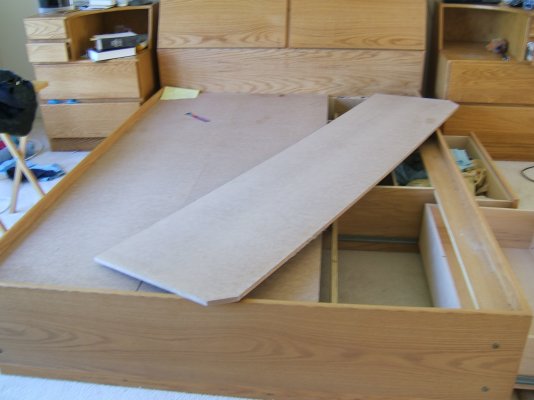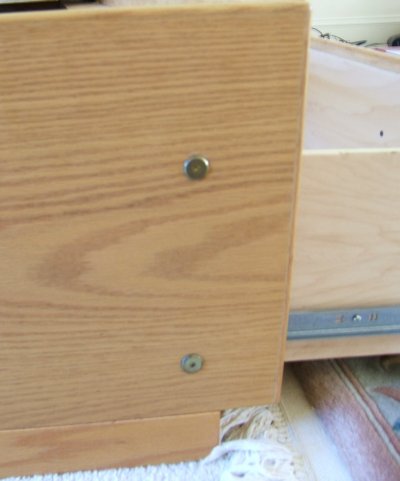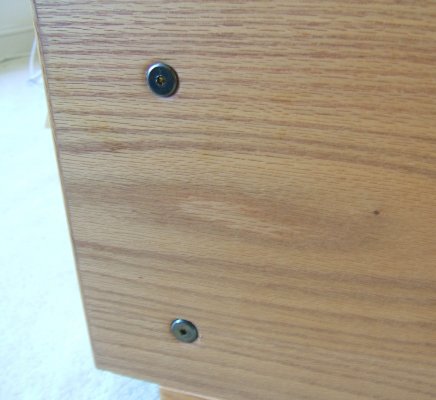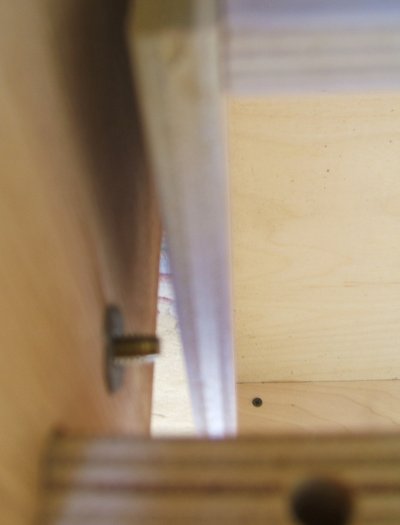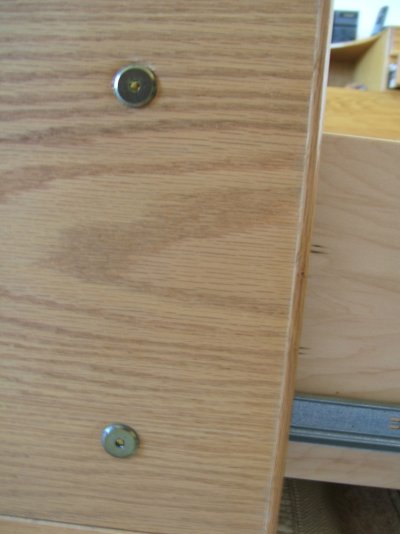Amethyst
Give me a museum and I'll fill it. (Picasso) Give me a forum ...
- Joined
- Dec 21, 2008
- Messages
- 12,684
I was going to title this "Someone screwed us" just to beat others to it, but it really is no laughing matter.
The pictures shows the front panel of a Danish platform bed. We need to take this bed apart for moving. As can be seen, the front panel is screwed to the bed frame with four heavy screws. The screws have indentations about 4 mm wide and 6-sided/vaguely star-shaped, although the star "points" are somewhat dull. I don't think they are pure Allens, and they could be Torxes, but the six points aren't very distinctive. The screws are about 2 inches long and protrude through the back of the bed frame. Similar screws hold the bed frame to the headboard.
We bought this bed from the same local store that had, years earlier, sold us an identical-looking bed, which is put together with heavy metal brackets and comes apart easily for moving.
Coming back from overseas 5 years ago, we needed a bed to sleep in while waiting on our stored household goods, so we ordered this one before returning to the U.S.
When the man who delivered and set it up proceeded to use an electric screwdriver to put it together, bim bim bim, we didn't think to tell him to take the whole $#@! thing back, which we should have done. Now, the store is out of business.
Anybody know how to remove these screws to keep from ruining the wood? There is no "channel" for them, they are just screwed right in.
Thank you,
Amethyst
The pictures shows the front panel of a Danish platform bed. We need to take this bed apart for moving. As can be seen, the front panel is screwed to the bed frame with four heavy screws. The screws have indentations about 4 mm wide and 6-sided/vaguely star-shaped, although the star "points" are somewhat dull. I don't think they are pure Allens, and they could be Torxes, but the six points aren't very distinctive. The screws are about 2 inches long and protrude through the back of the bed frame. Similar screws hold the bed frame to the headboard.
We bought this bed from the same local store that had, years earlier, sold us an identical-looking bed, which is put together with heavy metal brackets and comes apart easily for moving.
Coming back from overseas 5 years ago, we needed a bed to sleep in while waiting on our stored household goods, so we ordered this one before returning to the U.S.
When the man who delivered and set it up proceeded to use an electric screwdriver to put it together, bim bim bim, we didn't think to tell him to take the whole $#@! thing back, which we should have done. Now, the store is out of business.

Anybody know how to remove these screws to keep from ruining the wood? There is no "channel" for them, they are just screwed right in.
Thank you,
Amethyst

